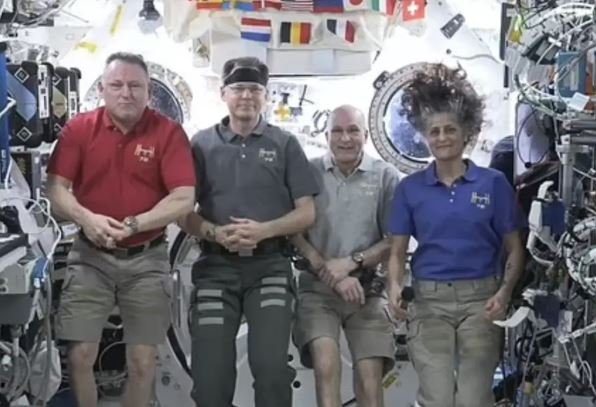A doctor has shared a devastating update on the NASA astronauts stranded aboard the International Space Station (ISS).
Sunita Williams and her fellow astronaut, Barry Wilmore, originally planned to spend only eight days on the ISS after launching on June 5.
However, their return has been delayed due to technical malfunctions in the Boeing Starliner capsule that carried them into orbit.
The astronauts are now stuck on the ISS until at least late March, when they are expected to return on SpaceX’s Crew-9 spacecraft.
Now, a doctor has issued an update on the astronauts’ health.

President Donald Trump has weighed in on the situation, claiming that “the two brave astronauts” were “virtually abandoned by the Biden administration,” according to MailOnline.
The 78-year-old former president called on Elon Musk and SpaceX to assist with their return, and Musk responded, promising to bring astronauts Williams and Wilmore back “as soon as possible.”
Although SpaceX had been assigned to return the astronauts, their departure was delayed due to complications with Boeing’s Starliner. The spacecraft faced multiple technical issues, including helium leaks and thruster malfunctions.
NASA eventually determined the capsule was not fit for a safe return and decided to bring the astronauts home aboard Crew-9, which is currently docked at the ISS.
Originally, NASA had planned for the Crew-9 return in February, but this timeline was revised in December. The agency explained that Crew-10 needed to launch to the ISS before Crew-9 could depart.
As a result, Williams and Wilmore will have spent nearly ten months in space—two months longer than a typical ISS mission.

Astrophysicist Scott Manley has suggested potential alternatives to speed up the astronauts’ return.
One option could involve launching Crew-10 ahead of schedule, which would allow Crew-9 to depart earlier. However, SpaceX has not confirmed if this is a viable solution.
Another possibility would be to let Crew-9 leave before Crew-10 arrives, though this would contradict NASA’s usual handover protocols. These procedures ensure that departing astronauts can train their replacements, maintaining smooth operations aboard the ISS.
The astronauts have also provided an update on their health and experience. Williams shared that she has lost the ability to perform certain basic physical activities after spending such a long time in microgravity.
During a video call with students at Needham High School in Massachusetts, she explained, “I’ve been up here long enough, right now I’ve been trying to remember what it’s like to walk. I haven’t walked. I haven’t sat down. I haven’t laid down.”
Extended exposure to microgravity has various effects on astronauts’ bodies, including muscle atrophy and bone density loss. NASA reports that without proper countermeasures, astronauts’ weight-bearing bones lose about one percent of their density per month.

After extended periods of weightlessness, even basic movements become challenging, making the transition back to Earth’s gravity difficult for astronauts.
Despite ongoing speculation, neither NASA, SpaceX, nor the White House has confirmed any adjustments to the return schedule.
In the meantime, a doctor has outlined a health plan for the astronauts following their return to Earth, expected around March 19-20.
Dr. Vinay Gupta, a pulmonologist and Air Force veteran, explained to MailOnline that the astronauts will face a challenging rehabilitation process. Due to the prolonged exposure to low gravity, doctors anticipate they will be unable to walk upon return and will require stretchers and immediate medical assessment.
Rehabilitation is expected to last at least six weeks, focusing on rebuilding muscle mass, bone density, flexibility, and cardiovascular health.
Extended space exposure also increases the risk of radiation-related health problems, such as cancer and osteoporosis. Additionally, psychological recovery may be necessary due to the emotional strain from their prolonged mission.







